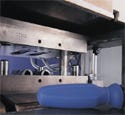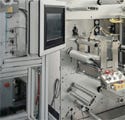April 15, 2008
Originally Published MPMN April 2008
OUTSOURCING OUTLOOK
Product Design, Development, and Prototyping
|
Michael Gauthier, president, Gauthier Biomedical, Grafton, WI. |
When selecting vendors for design, development, and prototyping, OEMs have a lot to consider. Although all projects are different, here are some key attributes that OEMs should assess each time they search for a vendor:
Credentials. Qualifications vary drastically among vendors who service the medical OEM community. Start with the basics by checking to see whether the vendor has ISO certification in place; ISO 13485 certification is usually preferable for the medical device industry.
Capabilities. If you plan to use the same vendor from rapid prototyping to clinical build, you may want to find out about its capabilities and capacity. Usually a simple site visit can identify a vendor’s potential. Check that the company has space for more equipment, and if it has plans to expand.
Communication. Because the collaboration process is so critical to good product development, it’s helpful to have the ability to quickly and easily share design ideas. Check to see if the vendor uses the latest in 3-D solid-modeling software to verify the form, fit, and function of devices, and make sure that it is able to offer full photorealistic renderings of concepts for your review.
Experience. An experienced vendor is often capable of designing procedure-specific instrumentation. Look for a vendor that can bring multiple options to the table. Experience will enable a vendor to steer OEMs around design pitfalls and may have a variety of proprietary products that allow it to provide unique service features that others can’t.
Patented Technology Enables Prototyping of Microstructures
|
Rapid prototyping of microdevices is accomplished with a patented technology that enables the patterning and miniaturization of designs down to 3 µm—without a photomask. Stents, catheters, and implantable devices can be prototyped using this technology, which allows for the patterning of many shapes, surfaces, and materials. In addition to prototyping services, the company provides its equipment to firms and researchers.
Intelligent Micro Patterning LLC, St. Petersburg, FL
www.intelligentmp.com
Company Specializes in Electronic Device Development
|
Providing electronic device and software development services to medical companies, a firm specializes in designing products with embedded systems, including drug-delivery, respiratory, and imaging devices. The company can manage product development from concept through manufacturing, or it can work in tandem with an OEM’s development team to design an electronic subsystem to meet a project’s requirements. Analog and digital circuitry, microcontroller hardware and firmware, and human interface design are available.
Sunrise Labs Inc., Auburn, NH
www.sunriselabs.com
Company Has Designed More Than 2000 Medical Balloons
|
A designer and manufacturer of medical balloons, finished products, and related equipment has developed more than 2000 balloon designs, according to the company. The firm can support proprietary product design, or build a prototype based on customer specifications. Whether in the prototyping or production stage, balloon sizes can range from 0.5 to 50 mm in diameter and up to 250 mm in length, with wall thicknesses as thin as 0.0002 in. Potential materials include nylon, Pebax, polyurethane, and PTE, and materials testing and analysis is offered using differential scanning calorimetry, dynamic mechanical analysis, and extensional testing. Balloon and catheter prototyping can be scaled up to full manufacturing in multiple cleanrooms.
Interface Associates, Laguna Niguel, CA
www.interfaceusa.com
Orthopedic Instrumentation Provider Can Develop Prototypes in Two Days
|
Prototyping is part of a firm’s full-service orthopedic manufacturing offerings. Depending on a project’s complexity, prototypes can be developed in as few as two days, according to the service provider. The company can modify existing products or develop new products based on customer designs. Each prototype is machined, fabricated, finished, and quality tested based on standard production processes to ensure manufacturability. A feature on the company’s redesigned Web site allows customers to design a virtual product from scratch, which company engineers can then use to build a prototype.
Gauthier Biomedical, Grafton, WI
www.gauthierbiomedical.com
Product Design Process Incorporates Lean Manufacturing Practices
|
A company designs and develops wound-care, diagnostic, drug-delivery, and other medical devices made employing various laminating, die-cutting, and dispensing techniques. For each project, the company holds a product and process preparation (3P) event, a lean manufacturing practice whereby engineers, quality personnel, production operators, and subject matter experts convene to develop several alternative product designs and process steps to meet a customer’s needs. Then the team evaluates each alternative against budget and manufacturing criteria. The 3P event is suited for complex projects with tight deadlines.
Tapemark, West St. Paul, MN
www.tapemark.com
Copyright ©2008 Medical Product Manufacturing News
You May Also Like








